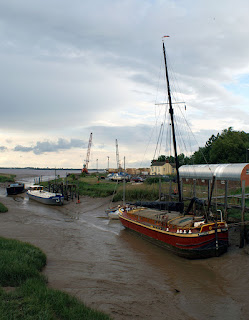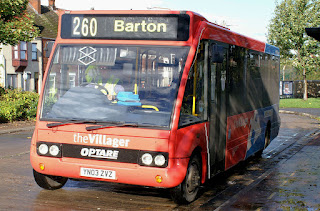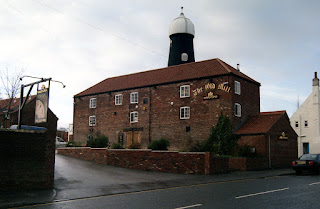We now leave Lincolnshire and take a walk across the Humber Bridge into the great county of Yorkshire. (Creative Commons License).
Looking back, we see Lincolnshire on the horizon. (Creative Commons License).
We're now in the town of Hessle, a western suburb of Kingston upon Hull. Our first stop is for a pint in the Hase, a former Whitbread pub in the main square.
East Yorkshire Motor Services (EYMS) run regular services from here into Hull.
However, we'll take a walk down to the railway station, where we find this ex Sunderland Bristol RE with Phillips of Shiptonthorpe.
The station, on the Selby to Hull line, was built by the North Eastern Railway.
The line was later quadrupled.
By 1984, it had reverted to two tracks.
To the east of Hessle were extensive marshalling yards and WD 90670 was captured on film arriving from Hull Docks.
Further towards Hull were junctions allowing access to the docks on the western side of the city, plus Dairycoates locomotive sheds. The layout was remodelled by the LNER in the early 1930s, including a flyover enabling passenger traffic to avoid the frequent freight movements.
Dairycoates shed had LNER 2017 in its yard in 1931.
Dairycoates was also a busy suburb of Hull and was served by the city's trams.
Back on the main line into Hull, we seen come to Hessle Road Junction and level crossing, controlled by this fine NER signal box. (Photo in my collection, photographer unknown).
The level crossing was later replaced by a new road bridge, with a new connection being laid onto the former Hull & Barnsley Railway's Neptune Street Goods branch. Here is Hessle Road Junction, seen from the road. (Photo by "Leon" of Flickr, Creative Commons License).
The connection was later doubled. Here, 66117, waits to come off the H&B line in 2018. (Photo by John Grey Turner of Flickr, Creative Commons License).
We'll finish this post in a pub, the Bean Hotel, on Hessle Road. Serving Hull Brewery (now closed) beers, it has long since vanished.
In the next post, we'll visit the docks and move into the city.































































